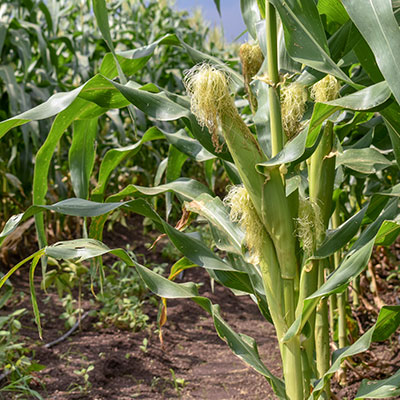Porto Alegre, March 14, 2023 – While the international market is moving toward the US crop, the Brazilian market keeps trying to reach August, during the harvest of the corn second crop, without major risks of supply and prices. The consumer sector is taking some advantage at this moment, as Brazilian growers are excited about Argentina’s losses and have decided to hold more soybeans. Meanwhile, physical corn or the one to be reaped in the summer is sold. Growers seem not inclined to retain corn and bet all their chips on soybeans. At the same time, attempts are being made to condition corn prices in Brazil to possible future cases of Avian Influenza, with the next migratory wave occurring only from November.
The Brazilian market is reaping its summer crop and trying to organize logistics in the middle of a record soybean crop, constant rains, and difficulties with roads and ports. Amid all this, growers continue to reap corn, trying to organize space for storage and, as has been routine, selling corn to prolong the maintenance of soybeans.
This decision by growers will maintain the market with regional availability to serve consumers in the short term. If there is any retention, the market can rise quickly, but as long as the decision remains to sell to clear logistics, corn offers will arise and hold back the price movement. With nearly half of the soybean crop reaped, we will still have a difficult second quarter in terms of logistics.
From April, some situations are likely to change. The soybean harvest between Ponta Grossa and Passo Fundo is expected to gain strength, and it seems normal for growers to experience a reduction in corn sales pressures in favor of the soybean logistic flow. It would be an important space for some positive movement in corn prices in the region. In the Southeast, May presents a higher concentration of corn harvest and will be important to meet the regional demand.
In this first quarter, the internal corn market has managed to hold back bullish movements. Not even the good exports of February and March have been able to give more speculative strength to the market, and the growers’ sales decisions are prevailing. Another point that could change the characteristics of the market is the delay in the second-crop planting. Last week, work evolved well, some farmers gave up planting in some locations, and a larger portion of crops will be pollinating during the critical phase of the weather. However, it seems that the internal market is not worried about this, such as, for example, the probable 10-to-20% decline in the corn acreage in the second crop of Paraguay this year.
On the other hand, consulting firms with no realistic bias or without experience try to bring the avian flu panic to corn growers. We have already presented in our newsletters the sanitary protocol for the avian flu for the Brazilian market and we will not discuss topics that have no real short-term impact on the domestic market. We will only add that the bird migration cycle is decreasing this March and must only be back in November. Therefore, the biggest fear for Brazil would be in 2024 and not right now. Given the intensity employed in the country toward the “free chicken” production model, i.e. with most of the time spent outside the housing and sanitary facilities, the risk of avian flu in Brazil grows substantially. A 10-to-20% decline in Brazilian herds could cause a decrease in domestic demand by 10 to 12 million tons of corn and 3 to 4 million tons of soymeal in 2024. All corn would be redirected to exports as an immediate flow channel.
Follow the Safras Agency on our website. Also follow us on our Instagram and Twitter and stay on top of the main agribusiness news!
Copyright 2023 – Grupo CMA

